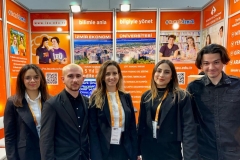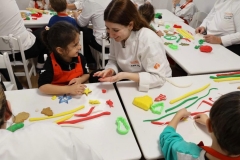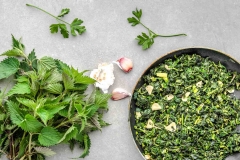
SCHOOL OF APPLIED MANAGEMENT SCIENCES
Gastronomy and Culinary Arts Program
GEAR 305 | Course Introduction and Application Information
| Course Name |
Turkish Cinema
|
|
Code
|
Semester
|
Theory
(hour/week) |
Application/Lab
(hour/week) |
Local Credits
|
ECTS
|
|
GEAR 305
|
Fall/Spring
|
3
|
0
|
3
|
4
|
| Prerequisites |
None
|
|||||
| Course Language |
English
|
|||||
| Course Type |
Service Course
|
|||||
| Course Level |
First Cycle
|
|||||
| Mode of Delivery | - | |||||
| Teaching Methods and Techniques of the Course | - | |||||
| Course Coordinator | - | |||||
| Course Lecturer(s) | ||||||
| Assistant(s) | - | |||||
| Course Objectives | This course introduces the emergence and transformation of the film industry in Turkey from a historical perspective until 1990s. |
| Learning Outcomes |
The students who succeeded in this course;
|
| Course Description | The course includes the following topics and related discussions: Historical development and transformation of the film industry in Turkey; production mode, aesthetic features and narrative structure of Yeşilçam industry; leading filmmakers and their films; identity, politics and transnationalism issues; major debates on the history of cinema in Turkey. The evaluation system includes three criteria: One film review (assignment), one data driven film analysis (project) and one response paper (mid-term). This course is conducted in English however, some of the films listed in the outline are not available with English subtitles. Therefore, this course is recommended for the students who have minimum competence in Turkish. |
|
|
Core Courses | |
| Major Area Courses | ||
| Supportive Courses | ||
| Media and Management Skills Courses | ||
| Transferable Skill Courses |
WEEKLY SUBJECTS AND RELATED PREPARATION STUDIES
| Week | Subjects | Related Preparation |
| 1 | Introduction How to avoid plagiarism? | |
| 2 | Debates on the historiography of cinema in Turkey Films: Selected early films by Lumiere Brothers and Thomas Edison. Georges Méliès, A Trip to the Moon (1902) Coen Brothers, World Cinema (2007) | Dilek Kaya Mutlu, “The Russian Monument at Ayastefanos (San Stefano): Between Defeat and Revenge, Remembering and Forgetting”, Middle East Studies 43:1 (2007); Savaş Arslan, “Introduction” in Cinema in Turkey: A New Critical History, Oxford University Press: 2011. |
| 3 | Production and movie-going in Turkey before 1950 Films: Muhsin Ertuğrul, Aysel Bataklı Damın Kızı (1935) Muhsin Ertuğrul, Kahveci Güzeli (1941) | Savaş Arslan “Pre-Yeşilçam: Cinema in Turkey until the Late 1940s” in Cinema in Turkey: A New Critical History, Oxford University Press: 2011. |
| 4 | Early masters of a late industry: The “cinema artists” generation Films: Lütfi Akad, Kanun Namına (1952) Osman Seden, Düşman Yolları Kesti (1959) | Savaş Arslan, “Early Yeşilçam: The Advent of Yeşilçam in the 1950s” in Cinema in Turkey: A New Critical History, Oxford University Press: 2011. |
| 5 | Movements and waves I: Social realism and new realism Films: Metin Erksan, Susuz Yaz (1963) Yılmaz Güney, Umut (1970) | Kurtuluş Kayalı, Metin Erksan Sinemasını Okumayı Denemek, Dost: 2004, pp. 77-90; |
| 6 | Movements and waves II: “Ulusal” and “Millî” cinemas Films: Halit Refiğ, Bir Türk’e Gönül Verdim (1969) Yücel Çakmaklı, Birleşen Yollar (1970) | Halit Refiğ, “En Doğru Yargılayıcı Tarihtir” in Ulusal Sinema Kavgası, Dergâh: 2009. Burçak Evren, “Yeşilçam ve İnanç Sineması” in Yücel Çakmaklı: Milli Sinemanın Kurucusu, Küre: 2014. |
| 7 | Yeşilçam I: Production and distribution Films: Yavuz Turgul, Aşk Filmlerinin Unutulmaz Yönetmeni (1990) Cem Kaya, Remake, Remix, Rip-Off (2014) | Nilgün Abisel, “Türk Sinemasında Film Yapımı Üzerine Notlar” in Türk Sineması Üzerine Yazılar, Phoenix: 2005. |
| 8 | Yeşilçam I: Genres and narration Films: Orhan Aksoy, Samanyolu (1967) Çetin İnanç, Dünyayı Kurtaran Adam (1982) | Nezih Erdoğan, “Narratives of Resistance: National Identity and Ambivalance in the Turkish Melodrama between 1965 and 1975”, Screen 39:3 (1998); Paul Willemen, “The Zoom in Popular Cinema: A Question of Performance”, Inter-Asia Cultural Studies (2013). |
| 9 | Migration and urbanization Films: Halit Refiğ, Gurbet Kuşları (1964) Kartal Tibet, Sultan (1978) | Gönül Dönmez-Colin, “Migration, Dis/Misplacement and Exile”, in Turkish Cinema: Identity, Distance and Belonging, Reaktion Books: 2008. |
| 10 | Political cinema Films: Zeki Ökten, Askerin Dönüşü (1974) Şerif Gören, Yol (1981) | (Court documents and censorship reports) |
| 11 | Gender Films: Lütfi Akad, Vesikalı Yarim (1968) Atıf Yılmaz, Dul Bir Kadın (1985) | Gönül Dönmez-Colin, “Gender, Sexuality and Morals in Transition”, in Turkish Cinema: Identity, Distance and Belonging, Reaktion Books: 2008 |
| 12 | Women filmmakers Films Türkan Şoray, Dönüş (1972) Bilge Olgaç, Gülüşan (1985) | Feryal Saygılıgil, “Bilge Olgaç’ın Gülüşan Film için Bir Okuma Denemesi,” Sinecine 2, 2010. |
| 13 | Transnationalism Films: Tunç Okan, Mercedes Mon Amour (1987) | Nejat Ulusay, “A Transformational Experience within the Contexts of ‘National’ and ‘Transnational’: The Case of Turkish Cinema” in Imaginaries Out of Place: Cinema, Transnationalism and Turkey, Gökçen Karanfil and Serkan Şavk (eds.), Cambridge Scholars Publishing: 2012. |
| 14 | Evaluation of the assignments | |
| 15 | Review of the semester | |
| 16 | Final Exam |
| Course Notes/Textbooks | |
| Suggested Readings/Materials |
EVALUATION SYSTEM
| Semester Activities | Number | Weigthing |
| Participation |
1
|
10
|
| Laboratory / Application | ||
| Field Work | ||
| Quizzes / Studio Critiques | ||
| Portfolio | ||
| Homework / Assignments |
2
|
50
|
| Presentation / Jury | ||
| Project |
1
|
40
|
| Seminar / Workshop | ||
| Oral Exams | ||
| Midterm | ||
| Final Exam | ||
| Total |
| Weighting of Semester Activities on the Final Grade |
4
|
100
|
| Weighting of End-of-Semester Activities on the Final Grade | ||
| Total |
ECTS / WORKLOAD TABLE
| Semester Activities | Number | Duration (Hours) | Workload |
|---|---|---|---|
| Theoretical Course Hours (Including exam week: 16 x total hours) |
16
|
3
|
48
|
| Laboratory / Application Hours (Including exam week: '.16.' x total hours) |
16
|
0
|
|
| Study Hours Out of Class |
14
|
3
|
42
|
| Field Work |
0
|
||
| Quizzes / Studio Critiques |
0
|
||
| Portfolio |
0
|
||
| Homework / Assignments |
2
|
8
|
16
|
| Presentation / Jury |
0
|
||
| Project |
1
|
14
|
14
|
| Seminar / Workshop |
0
|
||
| Oral Exam |
0
|
||
| Midterms |
0
|
||
| Final Exam |
0
|
||
| Total |
120
|
COURSE LEARNING OUTCOMES AND PROGRAM QUALIFICATIONS RELATIONSHIP
|
#
|
Program Competencies/Outcomes |
* Contribution Level
|
||||
|
1
|
2
|
3
|
4
|
5
|
||
| 1 | Successfully applies theoretical and practical knowledge and skills in Gastronomy and Culinary Arts |
|||||
| 2 | Carries best practices in terms of work and food security, safety and hygiene in food production |
|||||
| 3 | Appreciates, evaluates and makes decisions regarding to visual, textual and nutritional data with respect to food production and presentation |
|||||
| 4 | Recognizes and evaluates the impact of gastronomy on culture and society |
|||||
| 5 | Assumes responsibility for solving complex problems that may occur in the field of Gastronomy and Culinary Arts, both individually and as a team member |
|||||
| 6 | Evaluates the knowledge and skills acquired in the field of Gastronomy and Culinary Arts with a critical approach and effectively communicate their ideas and suggestions for solutions in written and oral form. |
|||||
| 7 | Possesses necessary knowledge and skills in relevant fields such as gastronomy, design, law and management and effectively apply them to the practice of Culinary Arts |
|||||
| 8 | Uses the technological tools related to Gastronomy and Culinary Arts effectively |
|||||
| 9 | Updates and improve the knowledge, skills and competencies related to Gastronomy and Culinary Arts with lifelong learning awareness and sustainability with an ethical approach |
|||||
| 10 | Collects data in the areas of Gastronomy and Culinary Arts and communicate with colleagues in a foreign language. (European Language Portfolio Global Scale”, Level B1) |
|||||
| 11 | Speaks a second foreign at a medium level of fluency efficiently |
|||||
| 12 | Relates the knowledge gained through the history of humanity to the field of expertise |
|||||
*1 Lowest, 2 Low, 3 Average, 4 High, 5 Highest
NEWS |ALL NEWS
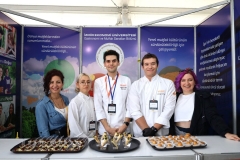
Aegean flavors from the chefs of the future
Izmir University of Economics (IUE) Department of Gastronomy and Culinary Arts left its mark on the 6th Izmir GastroFest, organized this year with
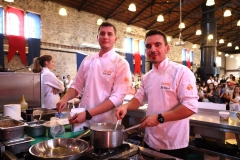
They added flavor to GURMEFEST
GURMEFEST, one of the biggest food, drink and entertainment festivals of Izmir, was ‘flavored’ with the dishes prepared and presented by the
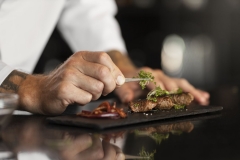
“Izmir and Bodrum will class up”
The MICHELIN Guide, one of the most prestigious restaurant rating systems in the world, has added Izmir and Bodrum to its Turkish
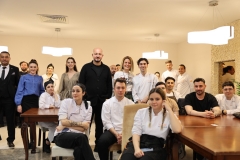
IUE graduates will prepare the flavors unique to Turkish cuisine
Bilsev Group, who is preparing to expand to Dubai this year with its Ferdi Baba, Fabrice Restaurant and Baba Pizza brands, will

They prepared products that are filling and have a long shelf life
25 students of Department of Gastronomy and Culinary Arts of Izmir University of Economics (IUE) prepared products with a long shelf life,



